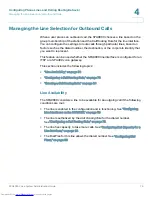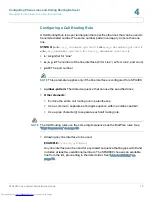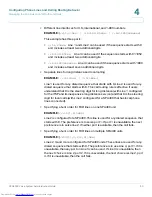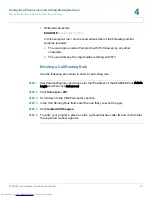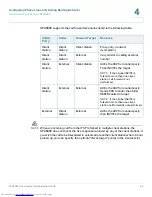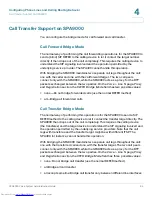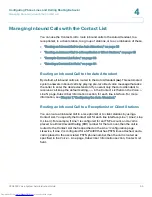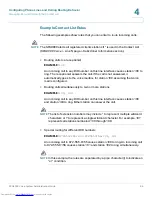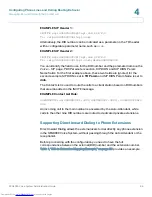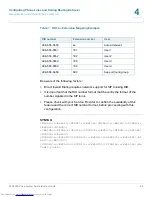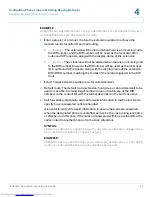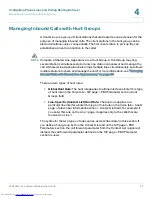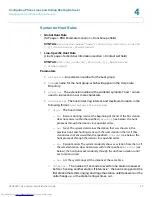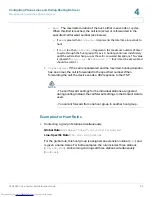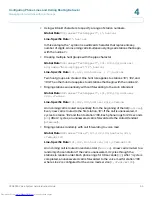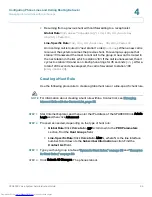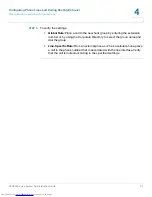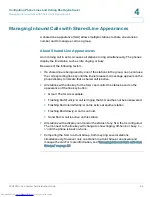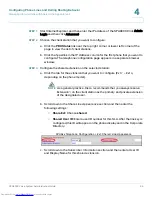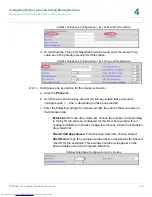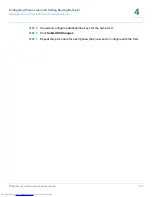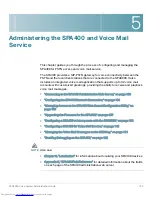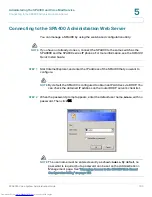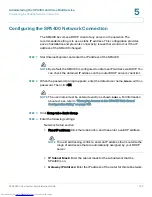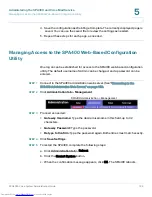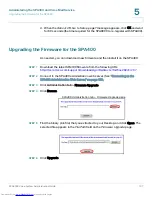
Configuring Phone Lines and Calling Routing Behavior
Managing Inbound Calls with Hunt Groups
SPA9000 Voice System Administration Guide
92
4
Managing Inbound Calls with Hunt Groups
A Hunt Group is a group of client stations that are treated as one extension for the
purpose of managing inbound calls. The client stations in the hunt group can be
alerted simultaneously or sequentially. The first client station to pick up the call
establishes a private connection to the caller.
NOTE
Compare a Shared Line Appearance to a Hunt Group. A Hunt Group may ring
several stations simultaneously, but only one station can answer and manage the
call. A Shared Line Appearance also rings multiple lines simultaneously but allows
multiple stations to share and manage the call. For more information, see
“Managing
Inbound Calls with Shared Line Appearances,” on page 98
.
There are two types of hunt rules:
•
Global Hunt Rule:
The hunt rule applies to all line interfaces. Enter this type
of hunt rule on the Voice tab > SIP page > PBX Parameter section, Hunt
Groups field.
•
Line-Specific (Contact List) Hunt Rule:
The hunt rule applies to a
particular line interface. Enter this type of hunt rule on the Voice tab > Line
N
page > Subscriber Information section > Contact List field. For example, if
you enter this rule on the Line 1 page, it applies only to the calls that are
received on Line 1.
The syntax for the two types of rules varies, as described later in this section. If
you define a hunt group both in the Contact List and on the SIP page > PBX
Parameters section, the call forward parameter from the Contact List is ignored;
instead, the call forward parameter defined on the SIP page > PBX Parameter
section is used.
Downloaded from
www.Manualslib.com
manuals search engine

